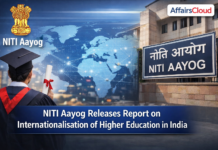To accelerate the Mumbai-Ahmedabad High-Speed Rail Corridor, meant for bullet trains between the two cities, Prime Minister’s Office has constituted a committee the vice-chairman of the NITI Aayog, Arvind Panagariya that will interact with the Japanese counterpart for taking the next step in implementation.
- The committee will comprise of Railway Board chairman, secretary in the department of expenditure, foreign secretary and secretary (industrial policy).
- The Cabinet’s approval for the high-speed line was based on the recommendations of a committee headed by Panagariya.
- It also approved was a suggestion to consider allowing private operators on the 508-km line.
 Task Profile
Task Profile
Railway Board chairman – Overall operations, Technical aspects
Foreign Secretary – Strategic importance of the project for bilateral operations
Secretary, DEA – Financial Outlay
Secretary DIPP – Make in India component
Why Japan technology has favoured upon China?
The Panagariya panel had favoured Japan over China due to the low-cost funding up to 80% of the cost proposed by Japan International Cooperation Agency, at a 0.1% interest rate (50-year repayment), apart from a commitment for technology transfer and local manufacturing for a specified period.
- On the basis of recommendations Indian Railways run the corridor for an initial five years, after which private operators could be allowed.
In India the proposed trains will be run on a standard gauge line, covering 12 stations between the Bandra Kurla Complex in Mumbai and Sabarmati at Ahmedabad. En route stations would be Thane, Virar, Boisar, Vapi, Bilimora, Surat, Bharuch, Vadodara and Anand. The train is described as having a maximum design speed of 350 km per hour.




